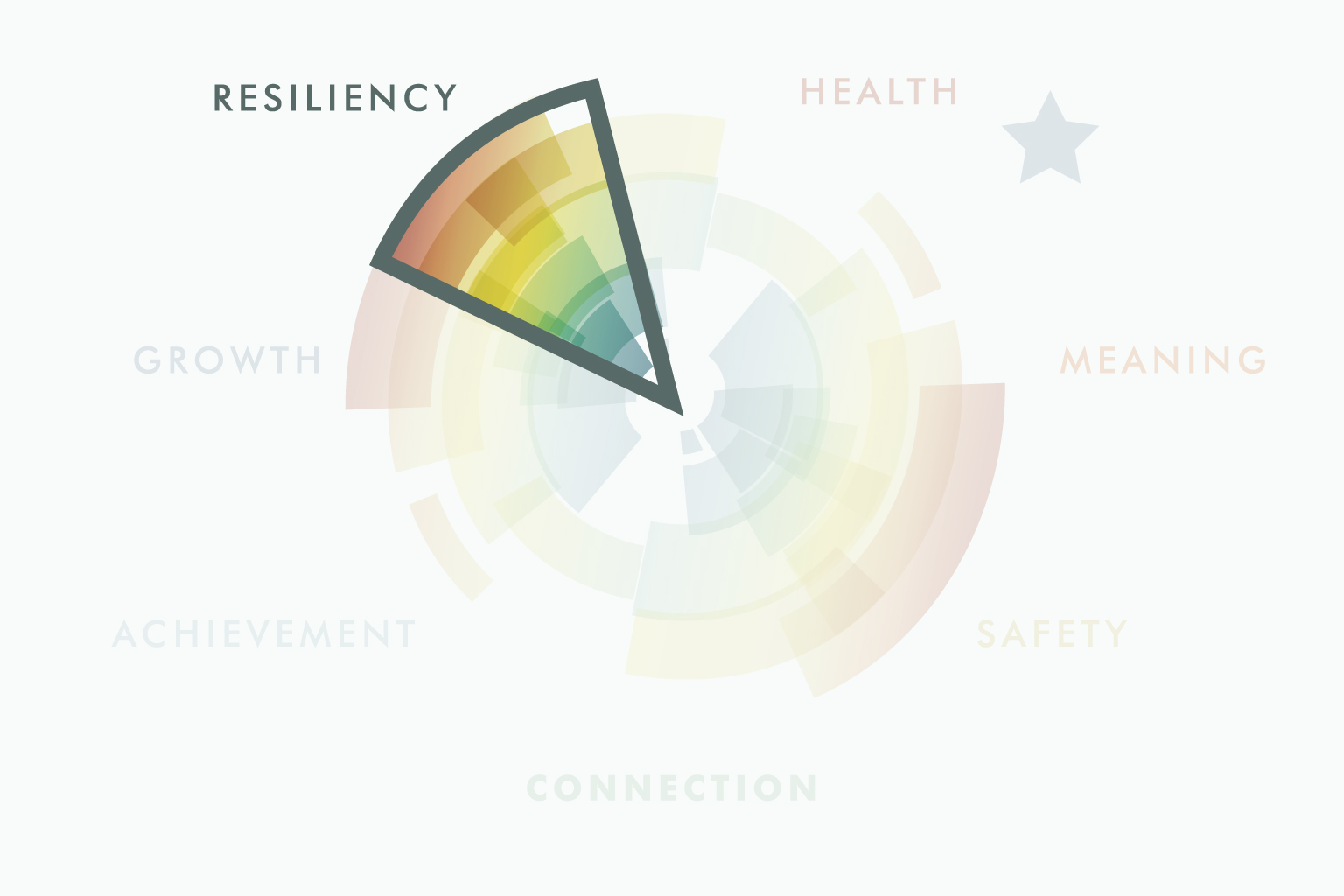Building a sense of belonging in the workplace is crucial for employee well-being and performance. Discover five strategic steps, applicable even for remote workers, that not only reduce turnover and sick days but also foster a strong culture of support. From addressing cultural differences to prioritizing mental well-being, these steps provide a roadmap for employers to create a workplace where every employee feels valued and connected.
Your Welcoa membership has expired.
Forget Stress Management: The Future of Work Requires Resilience
RESILIENCY: Viewing life with optimism. Feeling grateful and expressing appreciation. Feeling validated and encouraged.
Why is RESILIENCY critical to making the workplace whole again?
For WELCOA, no approach to well-being is complete without a conversation about burnout and resilience. Before the pandemic, many organizations addressed this in the form of a stress management initiative, but making the workplace whole again requires taking it one step further. It was true before COVID-19, and it is even more true today: none of us can really escape stress. Stressors are always going to be inherent in our environment as humans. So instead of stress management, we invite you to develop strategies for employee resilience—one of the basic human needs that comprises our definition of employee wellness. Resilience allows us to view life with optimism. Resilient people are able to feel grateful and express appreciation. Resilience often leads to a sense of feeling validated and encouraged. And—most importantly—having resilience allows us to quickly recover from difficulty. When we do not have tools for resiliency, we let stress continue to wear away at us and we experience burnout.
How does fostering RESILIENCY affect the working human?
Resilience helps combat burnout, which is a process that begins with not adapting well to life events that are hard to manage or cause us stress. Our thoughts and feelings about these events give us an altered perspective on our life and our work, leaving us feeling unmotivated and draining our energy. Then the actual burnout stage looks like a state of low-level living where our stress has repressed us and we don’t have the resilience we need to bounce back. We can’t perform our job duties effectively, we start snapping at our family members and coworkers, our sleep becomes disrupted, and we begin to spiral. Working humans right now are more prone to burnout than ever before. According to a global study lead by Qualtrics, 47% of employees report that they’ve felt burned out since the beginning of the COVID-19 crisis. And the symptoms are even more concerning. Thirty-two percent of employees who experienced burnout said that they lacked the energy to be consistently productive. Thirty percent said they dragged themselves to work and had trouble getting started. Twenty-six percent said they had become irritable or impatient with co-workers, customers or clients. So how can we begin to build more tools for resilience and burnout prevention into the workplace?
What are the first steps to improving RESILIENCY in the workplace?
Just this week at the WELCOA Connect Idea Collective on Social Connection and the Future of Work, Jason Lauritsen gave us a word picture for the wrong way of doing it. He put up an image of a pile of stones—one stacked on top of another—and asked that we not address well-being by just stacking one more stone on top of an already heavy load that our employees are carrying. In other words, this isn’t the time to invite employees to a lunch and learn about stress management. This is a time to start lightening the load so you are giving employees more time, more tools and more resources so they have the tools to bounce back. Consider offering flexibility around working hours. Give employees and managers tools for addressing what work expectations should be during this time. Provide resources to help improve employees’ remote working environment. Educate about what resources for resilience are already available through your EAP like free counseling services or other mental health resources.
How is WELCOA implementing strategies for RESILIENCY in our organization?
This has been a hard one at WELCOA. We are working harder and longer than we ever have to develop timely tools and strategies to help our Members navigate well-being in our new reality. Many of us are approaching or currently experiencing burnout. So here is what we did to address it. First, we just asked employees two questions:
- What does WELCOA do well in terms of helping you build and maintain resiliency?
- What does WELCOA not do well and/or what could we do better to help you build and maintain your resiliency?
What are WELCOA resources that support RESILIENCY?
- Check out the WELCOA’s Mental Health at the Workplace Toolkit put together in collaboration with the Johns Hopkins, Bloomberg School of Public Health Advisory Council on Mental Health.
https://www.welcoa.org/resources/resource-topics/mental-health-at-the-workplace/ - Managing Expectations (from COVID-19 Toolkit 2 for Employee Education & Resources)
https://www.welcoa.org/resources/covid-19-employee-education-toolkit/ - COVID-19 Toolkit 3: 10 Modules for Navigating the Return to Work Post Pandemic
https://www.welcoa.org/resources/navigating-the-return-to-work-post-pandemic/ - COVID-19 Toolkit 4: 10 Employee Resources for Navigating the Return to Work Post Pandemic
https://www.welcoa.org/resources/10-employee-resources-for-navigating-the-return-to-work-post-pandemic/
To read all posts in the Definition of Wellness series, visit the below links:
- Making the Workplace Whole: Meeting Basic Human Needs
- How Better Connection Can Make the Workplace Whole
- What is the Meaning of All of This? Strategies for More Purpose at Work
- Removing Barriers in the Workplace to Help Employees Achieve
- Why Growth Opportunities Give Employees a Reason to Show Up
- Cultivate Physical and Psychological Safety in Your Workplace
- Why Traditional Health Still Matters, But We Have to Get It Right!

Sara Martin, MS // Interim Chief Executive Officer • WELCOA
Sara has launched award-winning wellness programs and engineered work environments to create cultures of health across multiple industries. At WELCOA, her role is to ensure you continue to have access to the best products and information so you can achieve your professional and personal wellness goals.




